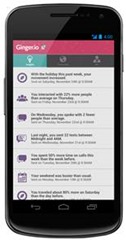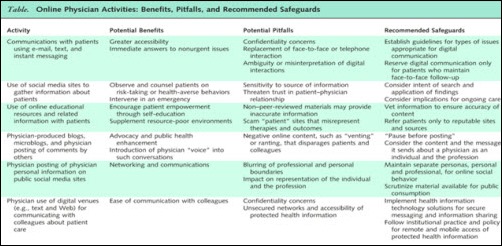Curbside Consult with Dr. Jayne 7/1/13
It’s been a busy couple of days for me with a lot going on outside of work. Unfortunately, it was all healthcare related and not in a good way. As I was leaving the office Friday, I received a call from an elderly relative. I wasn’t surprised to hear from her since her daughter had e-mailed me earlier in the week for advice.
It started out last Monday as as a classic tale of the things that can go wrong in a medical office – phone messages not making it to the physician in a timely manner, test results being misplaced, and more. Surprisingly, this was happening in the flagship office of a hospital’s employed medical group that had been on EHR for years. There was no excuse for lost messages, missing results, or delayed callbacks, especially with a frail patient. It was bad enough that she was considering a change of physicians after nearly 20 years at the same practice.
Unfortunately the best advice I could offer based on the information available (and it being Friday after 5 p.m.) was a recommendation to go to the emergency department since the likelihood that she would get a call from the physician was low. I offered to pick her up rather than wait for her daughter to drive over. After all, when you can take a spare physician to the ED with you to make sure you stay safe, you might as well.
The facility wasn’t very busy, but the registration experience left something to be desired. She was in a wheelchair and couldn’t see the “Guest Relations Specialist” over the tall counter. I put that title in quotes because I’m not sure what she was really there to do. She wasn’t performing registration (and in fact refused the insurance cards that were offered) or doing triage. Basically she just found the name in the computer and went back to chatting with her co-worker, which she did for most of the time we were in front of her.
After some time, we met with a triage nurse, who clearly had already reviewed the patient’s records in the EHR was able to ask targeted questions in addition to the required screenings and assessments. We moved quickly to an exam room, where the actual registrar came in and took care of the insurance paperwork. She also corrected a phone number that was at least six or seven years out of date despite several recent visits to the health system.
As sometimes happens in the ED, we saw the physician before the nurse came in. I was pleased to see that the nurse had already reviewed the chart when he arrived. He specifically mentioned that he had looked at her information and would try not to ask the same things as the doctor, which was much appreciated. Although a long-time employee of the health system, he was new to the facility. We sympathized about the EHR and getting used to it. He apologized for being slow on the system and we appreciated his honesty.
I can’t say we appreciated the nurse that was mentoring him, though. She would come into the exam room from time to time and tell him he needed to do things differently in the computer. She never introduced herself or acknowledged the fact that there was a patient or a family member in the room. She barked instructions at him and then left. I could tell he was embarrassed by her behavior. I appreciated his attempts to make up for it.
We finally received the radiology results more than three hours after the tests were performed. After five hours in the ED, she was admitted, which took another 90 minutes. There was little communication about what was going on and why it was taking so long. I know it was frustrating for her as a patient and it was even more frustrating for me as a support person and especially as an ED physician who knows we can do better.
The fantastic nurse wrapped our sweet nonagenarian in heated blankets for the trip to the med/surg unit. He was rolling her out the door when his mentor stopped us to complain about his data entry skills and to make him fix the entries before he left the ED. She had absolutely no compassion for the patient and didn’t even apologize for leaving the gurney half hanging out in the hallway while she complained about the documentation.
We finally made it to the floor, only to experience another bit of silliness. Although the patient was asked at triage whether she was suicidal, whether she felt safe in her home, and the level of her pain, she was never asked her preferred name even though I know there’s a field for that in the system. She goes by her middle name rather than her first, so asking might have been courteous. The nurses immediately called her by her first name and that’s what they had on the white board in her room as her preferred name. Regardless of whether she uses her first or middle, as a healthcare professional, I would never dream of calling a non-pediatric patient (especially one in her 90s!) by anything other than Mrs. or Ms. and her last name.
By now it was nearly 2 a.m. and I helped the nurse get her settled. I’m not sure why we had to go through the instructions for the touchscreen meal ordering system or how to operate the television at that hour, but we did, along with a stack of paperwork that I’m fairly sure she would not have understood without my help. She was finally allowed to rest. Since then her hospitalization has been uneventful, but she has savvy family members that are keeping up with her treatments and medications and making sure to minimize the risk of medical misadventures.
In thinking back about all of it though, it makes me sad. I think we’ve lost the care in healthcare. We’re so busy meeting the letter of the law and checking the boxes that we can’t deliver what we hoped to when we were called to the healing professions. Those making the rules forget that patients are seeing and hearing everything we do and are recognizing that our focus is not on them.
As colleagues in healthcare IT, let’s promise to do our best to turn it around. How do you think we can make a difference? E-mail me.





























You know what will radically improve patient lives? Universal healthcare, access to housing, paid childcare, better public transport. Improve a…